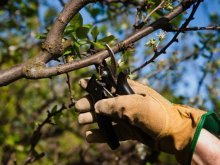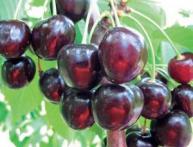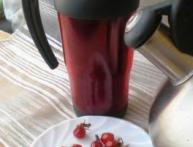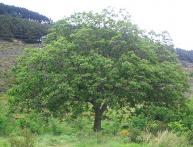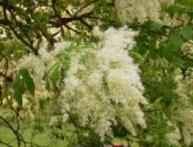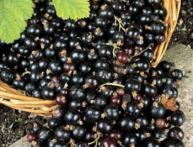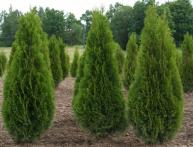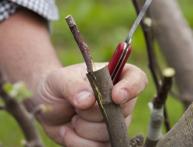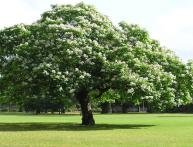How to care for cherries after planting and adult plants, pest and disease control
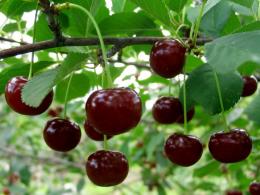
Cherry - fruit plants from the genus Plum. They have been known in culture for a very long time. Cherry fruits have a pleasant taste and healthy composition, which is why cherry orchards are as popular as apple orchards. Cherries are distributed almost everywhere, and many frost-resistant varieties have been developed. Let's try to figure out how to care for cherries of different ages and in different seasons.
Content:
- Caring for cherries after planting
- Caring for cherry trees older than three years
- How to deal with pests and diseases of cherry trees
Caring for cherries after planting
Caring for cherry trees begins with choosing healthy planting material. It is advisable to do this in trusted nurseries and garden centers. You should choose an annual or biennial plant. Preference should be given to seedlings that have already been crowned, that is, the seedling was pinched and this was an impetus for the growth of lateral branches. A one-year crowned cherry seedling already has three to four skeletal branches.
The best soil for cherry trees is light sandy loam or loamy soil with a neutral reaction. Care seedling cherries also includes preparing the soil for planting, which involves digging and applying organic and mineral fertilizers. The planting pit is prepared in certain sizes:
- 50 - 60 cm deep
- in diameter up to 70 cm
The bottom of the pit is filled with soil from the upper fertile layer, to which is added a bucket of old, rotted manure and complex mineral fertilizer in an amount of about 20 g of each active ingredient. After filling the hole with fertile soil, but before planting the seedling, a wooden stake is driven into the hole. This is necessary to fix the young cherry and accelerate its rooting.
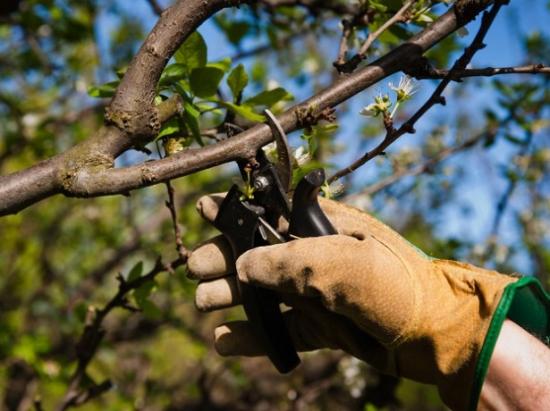
After planting in a hole, the root system is covered with soil, which is lightly compacted and spilled with a bucket of water. The tree trunk circle is mulched with peat or humus. Immediately after planting, all branches and the central shoot are cut off by at least 1/3, leaving three buds. A seedling without branches is simply shortened by 1/3. Further care during the year of planting consists of:
- in weed removal
- in regular watering
- in fertilizing
- in loosening the soil
In the first summer, young cherries need at least 10 waterings. In the next two years, in addition to the above measures, formative pruning is carried out.
Caring for cherry trees older than three years
The basic principles of caring for cherries are not fundamentally different from caring for other fruit trees. Cherry is a drought-resistant plant, but it must be watered several times during the season:
- first watering - May and early June, during the period when the cherry forms the ovary
- second watering - July and early August, when flower buds of the next season are formed on the cherry
- third watering - after leaf fall, before the onset of winter
The watering rate is selected individually for each tree and depends on weather conditions; on average, 2 - 3 buckets are sufficient. During periods of severe drought, you can water the tree with a large amount of water, about 10 buckets, which will give the cherry the necessary supply of moisture.
The first feeding coincides with the first watering, so these two activities are combined. In addition to mineral fertilizers, you can water the cherries with a solution of manure or mullein to which wood ash is added. The plant needs a second feeding two weeks after the first. The second time the cherries can be fed with complex mineral fertilizer.
To improve the quality and taste of the fruit, two weeks before ripening, you can apply fertilizers containing the element boron. After harvesting, in the fall, cherries need mandatory feeding before the onset of winter. Phosphorus-potassium and organic fertilizers are applied. If the soil is acidic, then the cherry fruits are prone to shedding; in order to prevent this, a solution of lime is poured under the cherry every three to four years.
Video about what diseases affect young cherry trees:
In early spring, the soil in the tree trunk circle needs to be cleared of plant debris and mulching mixtures removed. This must be done before the first watering. Let the soil dry. After watering, sprinkle the soil under the tree with new mulch. During the season, the soil needs to be loosened two to three times, and before the onset of winter, the soil under the tree can be dug up; this activity is usually combined with the application of fertilizers. In winter, the soil under the tree can be covered with a thick layer of snow.
In the spring, sanitary pruning is carried out. All broken and improperly growing branches are removed. Spring pruning is carried out before the buds open. If for some reason this is not done, then pruning is postponed until next spring. Remove any branches that grow inward or are at too sharp or wide an angle. In addition to branches, all shrunken trunks are cut out and excess root growth is removed. Important in caring for cherries prevention and control of pests and diseases plays a role.
How to deal with pests and diseases of cherry trees
Early spring spraying of trunks with a urea solution will help protect cherries from pests and diseases. It is important to do this before the sap begins to flow and not to be late, otherwise you can burn the opening buds. A catching belt will be a preventative against some pests; a large number of insects will stick to its adhesive surface. The main pests of cherries are:
- cherry shoot moth
- cherry fly
- cherry leaf roller
- cherry elephant
- goose
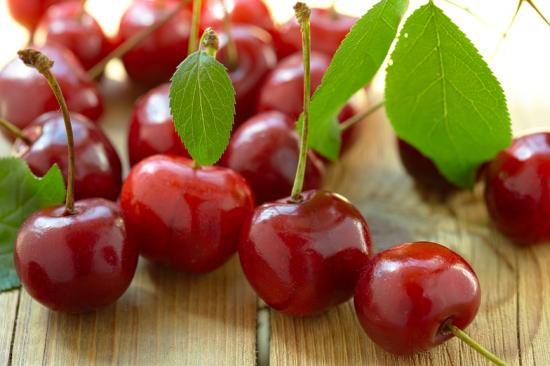
If the damage is minor, you need to spray the tree with a decoction of tomato tops. To do this, four kg of tops, you can take with flowers and ovaries, boil for half an hour in 10 liters of water. Then dilute one liter of solution with three liters of water, add 20 - 30 grams of grated soap and treat the cherries.
In case of emergency, the plant is sprayed with chemicals according to the instructions for them. You can treat trees with any preparation containing copper.
Potent drugs include Rovekurt and Actelik. It is important to remember that all treatments, especially those using chemicals, are completed two weeks before the fruits ripen and the harvest is harvested. Continue pest control possible after the fruits have been harvested. Prevention and treatment of diseases is important in caring for cherries. Most often, cherries suffer from:
- from gum discharge
- from coccomycosis
- from perforated spotting
- from fruit rot
Early spring spraying with Bordeaux mixture will help cope with the most common disease - coccomycosis. The use of the drug will also help.Since the pathogen overwinters in fallen leaves, all plant debris is carefully removed.
The main method of combating cherry diseases is timely treatment with fungicide solutions. To prevent gum growth, you need to bleach the trunks in a timely manner, fight diseases and cover up large damage to the bark. If you follow the basic rules of care, cherries will definitely produce a decent harvest of tasty and healthy fruits.

